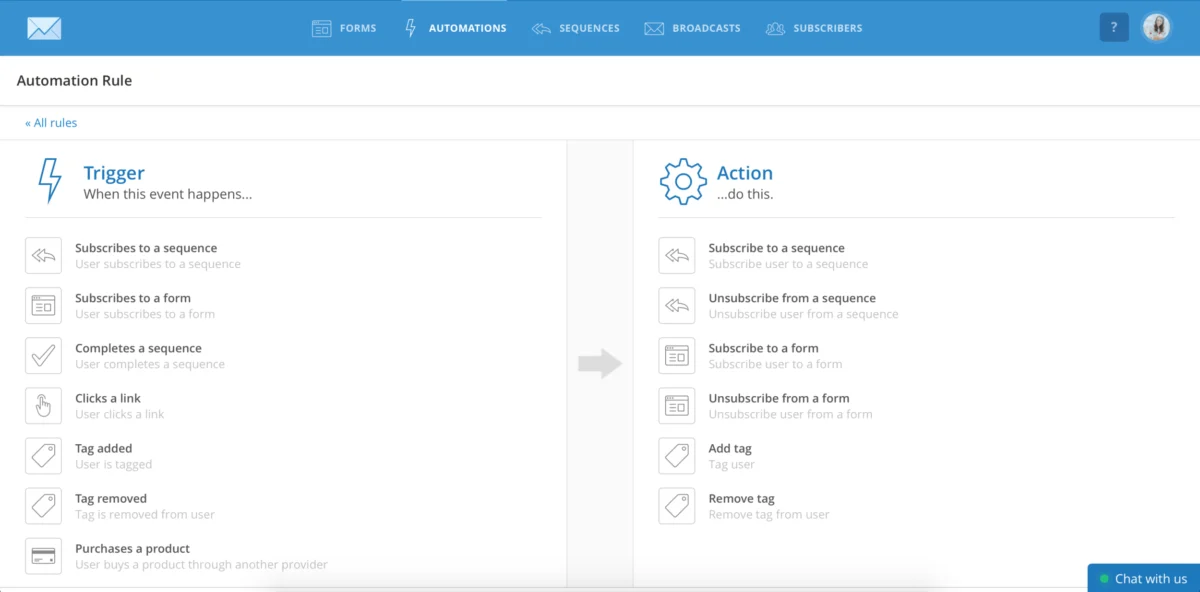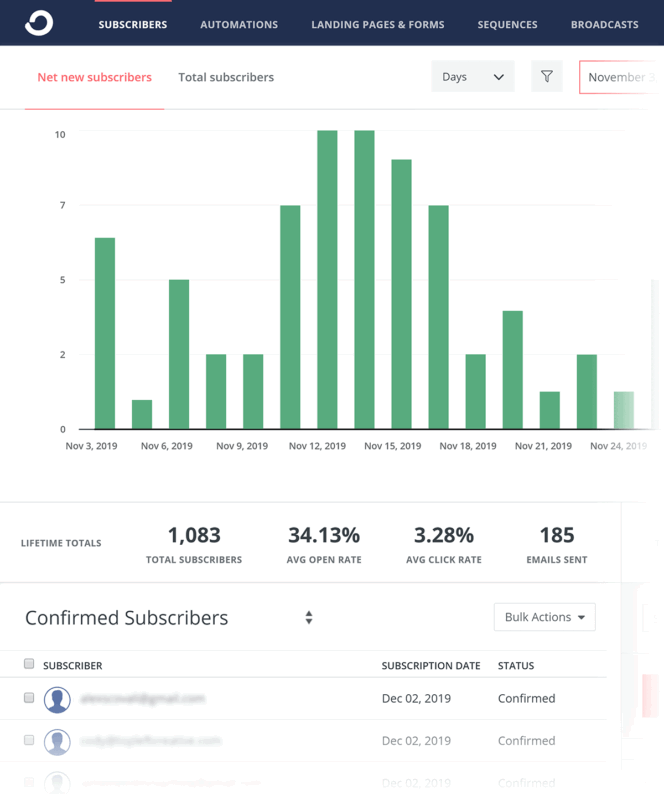Building out an email list is the single most important thing you can do as a creator.
You can have a million followers across a slew of social media accounts, but if you don’t have them on your mailing list they’re not really your audience.
They’re rented from Big Tech, and they can disappear at any point.

This happens either through algorithm changes or your account being removed for any number of reasons.
This is why you should always lead with an email list-first approach to your business.
Email was one of the main reasons why Brian Dean was able to get a seven figure exit with his site Backlinko.
According to Dean, Backlinko’s email list was the main reason SEMrush paid 7-figures for the business.
How Many Email Subscribers Is Enough To Make Money?

The most important thing to remember when it comes to email subscribers is quality always trumps quantity.
I learned this the hard way back in the day.
I built a list of 11,000 subscribers mostly through product giveaways and discount codes (it was for a hybrid e-commerce / affiliate project).
It took about 18 months to get to this scale but my engagement rates were terrible.
Like 20% open rates.
The reason for this was simple: I’d targeted the wrong type of audience.
All they wanted was something for nothing: freebies and discounts.
This made it next to impossible to engage with them in a meaningful way.
On top of that, the unsubscribe rates were high.
A lot of them got what they wanted (a discount code, for instance) and then unsubscribed.
Nowadays, I’d rather have a list of 100 rabid fans that are there because they want to be, rather than 10,000 unengaged randomers.
This is why niche selection and customer personas are so important.
You need to know who you want on your list and why.
100 Engaged Subscribers Is Better Than 10,000 Inactive Subscribers
Let’s say you’re a freelancer and you work as an SEO consultant for small businesses and start-ups.
You use your email list for two things: 1) to educate people that want to follow in your footsteps, and 2) to generate leads for new clients.
You might have an ebook that you sell for $10, or a paid course model ($20/mo) where you detail how to run technical SEO audits and plan out topical maps.
You use social media or YouTube to capture attention, to show potential subscribers and/or clients what you do and how you do it.
Your lead magnet could be a freebie version of one of your paid-for video courses.
Or a chapter from your ebook.
You focus solely on your subject matter in your content (modern SEO techniques for start-ups and small businesses) and you show up regularly, delivering lots of value.
If you want to see what this looks like in practice, check out Edward Sturm on YouTube.
He’s posted a YouTube video every day for going on 800+ days, and he’s still going strong!
This single-minded focus will attract the type of subscriber you want:
- Someone that wants to learn how to do what you do; these are course / ebook customers
- Someone that wants to hire you to run their SEO; these are paying clients.
Your lead magnet in this case serves two simple purposes: 1) it shows off your credentials and skillset and 2) it builds authenticity.
For clients and students, you’ll need both of these things.
Once someone subscribes, all you need to do to segment your list into two camps (students and potential clients) is add a simple tag in your welcome email.

You can ask them to click a button or fill in a survey too, either work fine; both are simple to do in Kit and most other email platforms.
And now you have your list split into two camps, so you can target your content accordingly.
How Much Could You Theoretically Make From 100 Subscribers Per Month?

If you execute your segmentation and content delivery flawlessly, those 100 highly qualified subscribers could generate roughly $2,340 in monthly revenue.
This comes from three main sources:
- First, selling the low-cost eBook to 10% of your 80 students brings in about $80 (eight sales at $10 each).
- Second, converting 15% of those 80 students to your $20/month course subscription generates $240 every month (twelve new sign-ups at $20).
- Finally, landing just one of your 20 identified client leads on an initial $1,800/month retainer is your biggest win, providing $1,800 from a tiny segment.
Add another estimated $220 from upsells or recurring payments from previous months, and you’re looking at $2,340 per month from a list size of only 100 people.
Of course, this is just a theoretical example.
But it demonstrates perfectly why the low subscriber, high-ticket approach to email marketing works so well.
Email Subscribers Cost Money, So They Need To Deliver An ROI For You

Before we wrap this up, we need to talk about vanity metrics.
The size of your mailing list DOES NOT matter. The only thing that matters is the revenue it generates.
Which is why your focus should solely be on the quality of your subscribers.
And when you spot dead weight (people not interacting with your content, not opening emails), you need to think about removing them.
Audit Your Mailing List Every Few Months, Remove Any & All Dead Weight
Have a specific cold email list sequence in place to sort out any and all uninterested subscribers.
Add anyone with low engagement to it, tell them if they’re not interacting with your content they’ll be removed.
You can automate this in Kit easily, and I’d recommend you start doing it from day one.
The more subscribers you have, the more you’ll pay too.
And if your list isn’t paying for itself, you’re paying for a party no one wants to be at.
This is why auditing your email list at least once a quarter is essential.
Get rid of the people that aren’t engaging with your content, remove anyone that has made a complaint.
This will keep your engagement rates higher and your costs lower.


